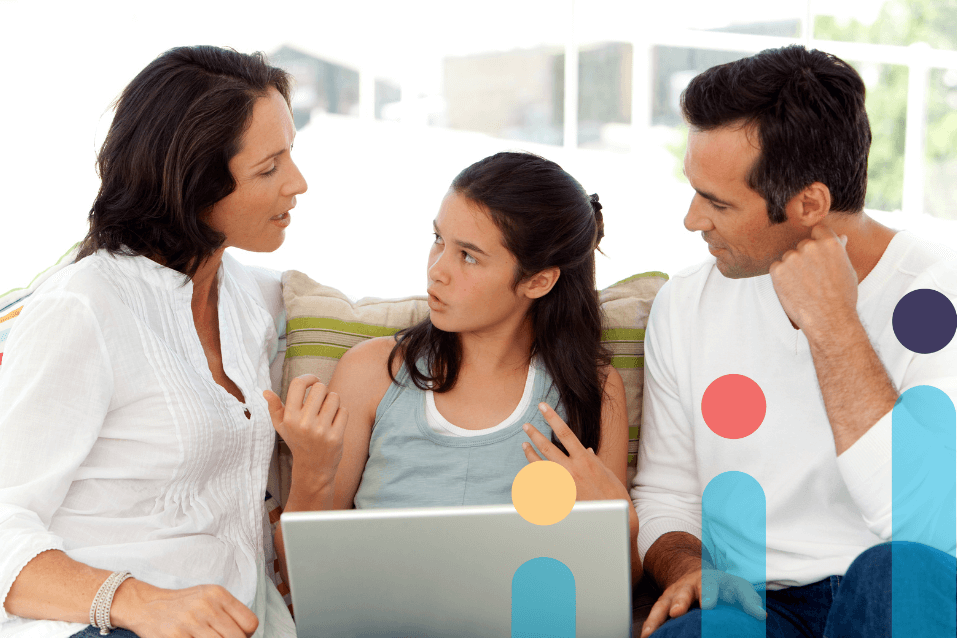By Miriam Walsh
Overview
Keeping your children safe online is paramount in the digital age that we find ourselves in. In a study conducted by Safe at Last, it was reported that a staggering 70% of children were exposed to violent content while doing homework. Not only that, 17% of teenagers received messages which upset them, and only 7% of parents were aware of this.
In this blog, I discuss Parental Controls on your child’s iPad, with examples and tutorials of Setting up Screen Time, Communication limits, Screentime Content, and Privacy restrictions.
What are parental controls?
Parental controls play a key role in supporting you to keep your child’s experiences online safe and productive. Parental controls on the iPad or iPhone are an inbuilt feature that allows you to control your child’s online activity.
Top tip: Parental controls must be enabled to restrict your child’s screentime!
How to Set Up Screen Time
One of the key benefits of parental controls is screentime.
Screen-time is an inbuilt feature on the iPad which allows you to monitor a child’s activity on the iPad as well as the content they are looking at and apps they are using.
To access Screen Time for the first time:
• Open up the general settings on the iPad. You should see the Screen Time settings below Do Not Disturb/Focus. Tapping on Screen Time will allow you to activate the Screen Time settings.
• You will first see an initial overview of the features before being prompted to indicate whether this is your iPad or your child’s iPad.
• When setting up these settings on your child’s iPad you will be given prompts to set up Downtime, App Limits and Content & Privacy (we will discuss these features below).
• The key step of this initial set up is to create a password so that only you can change these settings.
Top tip: You will also be prompted to add an Apple ID which is highly recommended. If you forget your Screen Time password this is the only way to reset it!
Screen Time activity and downtime
Screen Time activity and Downtime gives a clear indication of how much time is being spent on the iPad by hour and day.
As a parent it is possible to set hours where a child cannot access their device such as after bedtime. This is called Downtime.
Downtime can be customised so that there are different times on different days. For example, you might give a child more / less access on a weekend. When Downtime is enabled apps are greyed out and cannot be accessed.
When deciding on which apps to customise in Downtime it is useful to first look at which apps are commonly used. This can be viewed under activity. With apps like web browser – Safari it will also show which websites have been accessed.
Communication Limits
App and communication limits do take a little bit of time to customize initially but once set up can be modified as needed.
When setting up app limits it is important to consider apps your child uses in school. For example, if a child is using Seesaw or Safari at school, you do not want them to reach their limit and loose access when in school.
One workaround often used by kids is using video streaming sites or gaming sites via Safari to get around the app limits. However, you can also set limitations for websites!
For communication limits you can limit who can contact the device. This might be restricted to contacts only, contacts + groups (with at least one contact) or everyone. If you do not want the device to be used for wider communication, you can limit this to contacts only. Ideally this would be a family member and block out contact from friends if used while at school/study.
Screentime Content and Privacy Restrictions
If your child is using an iPad that is managed by their school the device will already have safeguarding profiles installed by the school’s management system.
However, you can use privacy restrictions in addition to the safeguards already in place. To change the settings for content and privacy you will be prompted to enter the screen time passcode. This will enable full access to these settings:
- changes to Bluetooth settings
- location services
- airdrop
- speech recognition
- photo access & much more
As with all these other settings these can be customized and changed as needed at any stage. Again, if this is a school device it is worth ensuring any settings the child needs for school are kept enabled.
Additional privacy settings can be found under general settings and scrolling down to privacy. Here you can customize the apps that have access to the users location, photos, camera, microphone and more. As with the above features these are easily customized and can be modified as needed.
As a parent it is worth taking a look at these features early on in your child’s iPad journey and using them as a way to check in on their online activity. The safe guarding features included also help you when providing a safe and filtered environment in which your child will use their device.
If you found this article helpful and would like to learn more, check out full course on Wriggle Connect Family titled ‘Parental Controls for Security and Privacy’ for iPad. Additionally, don’t forget to share with other parents you know will benefit from reading the above.

